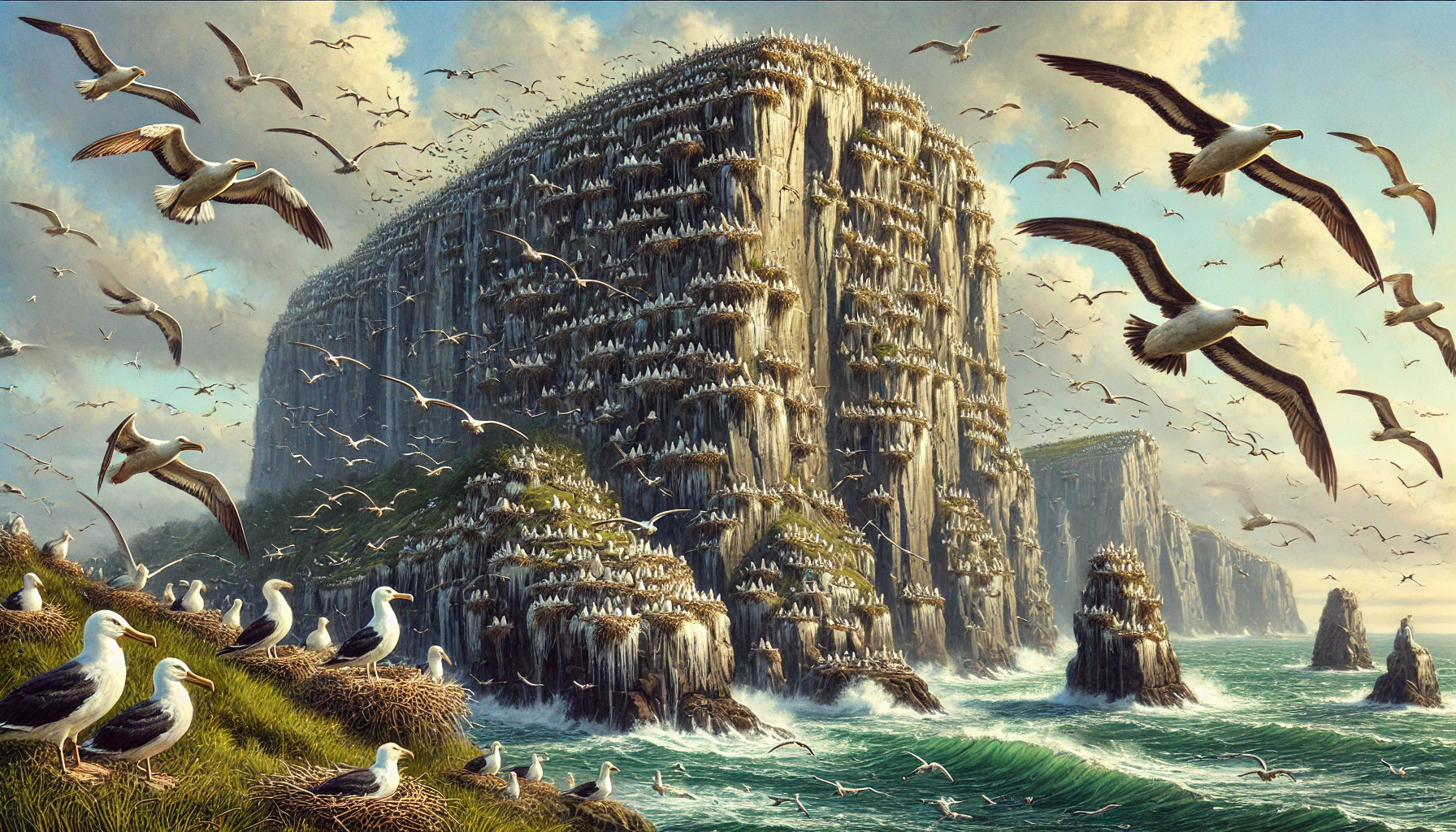Seagull Sanctuary
Far to the northwest of Elysoria, across 200 kilometers of cold, wind-churned sea known as the Nordwind Narrows, lies a lonely island seldom visited and rarely spoken of: Seagull Sanctuary. Smaller than its neighboring isles, it spans roughly 200 kilometers in diameter and appears on most maps only as a rounded smudge where ocean meets sky.
At its heart rise the Starfall Peaks, a cluster of long-dead volcanoes weathered by time and salt-laden winds. Their jagged silhouettes catch the first light of dawn like broken teeth against the sky. Around them spreads a wide belt of forests and grasslands, rich in mosses and low-growing shrubs, with quiet glades where the wind barely stirs.
But it is not for resources, riches, or mystery that Seagull Sanctuary is named. It is the birds—in their countless thousands—that give the island its title and its soul. The cliffs are white with them. The skies swirl with winged motion. Every crag, rock shelf, and strand is occupied by gulls, cormorants, petrels, and sea eagles. They nest here undisturbed, their cries filling the air like a ceaseless chorus.
Few humans have reason to travel to Seagull Sanctuary. There are no harbors, no trails, no settlements—only the ruins of a few ancient stone watchtowers, now claimed by moss and wing. And perhaps that is why the birds thrive here, year after year, cycle after cycle: because no one remains long enough to break the silence.
For those who do make landfall, usually scholars or lost sailors, the island offers something subtle—an untouched stillness, a place where the world seems to breathe more slowly. It is a place not to do, but to be. The gulls know this. And perhaps that’s why they stay.


Comments